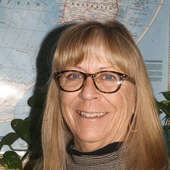- McCook in 1950 sees measles outbreak, the beginnings of the DAR shelter house (4/25/25)
- Busy women, busted wrists, and bad behavior: Tales from McCook’s Roaring Twenties (4/18/25)
- Natatorium dreams, washed away by time (4/11/25)
- Ice Cream, dances, and the birth of a hospital (4/4/25)
- Pete Matz: railroad engineer and singing sensation (3/28/25)
- Historic shift: Women hired at McCook Roundhouse (3/21/25)
- Who were they? Seeking names for these historic snapshots (3/14/25)
Pioneer beginnings in Red Willow County
Friday, January 26, 2018
The portions of this story I am using today come from a paper available in the Southwest Nebraska Genealogy Society’s library for further research. This is a perfect example of what I requested in my last article and that is why I am sharing it now. Written by Cora Elizabeth Minniear Ruby, the tale begins in Warren County, Indiana, where she was born in a log cabin on Feb. 9, 1875. Written when Cora was 81, which would have been around 1956, Cora begins her story by telling why her family pulled up roots and headed west.
“In the year 1877, I got sick and the doctor advised my folks to travel on the roads with me, so a covered wagon was fixed for that purpose. My father, mother and I, and a family by the name of Edd Farris, Dick Henton and daughter May, and a sister Anna Henton, started west to what is now the valley town of Danbury, Nebraska. We crossed the Mississippi River at Keokuk, Iowa.”
Look at all the information contained in that paragraph concerning families that we know ended up settling in Red Willow County! She tells how the men worked along the way earning money to finance their trip and how when they reached Fairbury, Nebraska; her father was hired by a widow to help with her farm so that her sons could go to school.
Their travels began again when: “Late in March of 1878, Mother got a letter from her sister, Mrs. Joe Johnston, who lived one mile west of the Bill Henton homestead on Beaver Creek. She said in her letter that there was a homestead relinquishment that could be bought for $14, as the man who owned it was giving it up and going back to the East. The place was the Harlow Dickens homestead north of the creek, north of Danbury. Father bought it – April 7, 1878, and we moved from Fairbury on March 31, 1878. That (the farm) was my home until the year 1880. Mother and I stayed alone, as Father worked at North Platte in the hay fields and at Indianola.”
Coming to the Beaver Creek area, her family had been told of the tragedy when Nelson Buck and his surveying party were killed by Indians in the area: “Of course, when we came we were told of this and it made us uneasy and afraid, so the great tragedy to us was the Indian raid when five men were killed at the old Stolen schoolhouse. They were Jones, the minister and school teacher who lived in the schoolhouse, Stenner, Kilpatrick, Pat Rathman, Ralph and Hemper. The S.W. Stilgebouer family, Father, Mother and I, Joe and Jeane Dolph, Barned and Jess Ashton, Sam Messner, Bill Henton and I think Frank Hess, were fortified at the log cabin on the corner of the Joe and Jeane Dolph homestead, west of where Bernard Dolph now lives. A rider had come down the valley and warned us of the Indians coming. Aunt Lizzy Stilgebouer, as we always called her, cooked for the bunch.”
Cora goes on to describe how after four days her father borrowed a horse from Bill Henton and along with Foster Stilgebouer, who was only 16, went out to “what the Indians are doing and where they are”.
What they found were the murdered men at the Stoten schoolhouse. Returning to the Dolph cabin, Cora’s father took her and her mother to the Stilgebouer home and then “Father and Uncle Sol Stilgebouer took a team and wagon and brought the Stenner family, the mother and six children, back to the Stilgebouer home. The soldiers from the south in Kansas had come and drove the Indians north to the reservation. Father, Mother and I went to our home.”
I’ll finish with some excerpts of this wonderful story in my next column. This weather has made it difficult for us to keep the library open on the usual Tuesday and Thursday hours and we post closings on Facebook when necessary, but keep us in mind when you wish to research either genealogy or history in our tristate region.

